Oh boy, here we are again. We still haven’t achieved a standard digital interface in most model scales, and once again, a manufacturer is trying to mess things up, coming up with a new plug, that isn’t even a standard yet.
Digital interfaces are a mess, and we’re all suffering
My old, aptly named “DCC plugs overview (they’ve gone crazy)” article is still one of the most read on the blog. I won’t repeat myself here in details, but here’s the heart of the message. We have too many different digital interfaces on the market, it’s confusing for the consumers, makes it more expensive for all manufacturers, and thus is one of the signs of why our hobby is dying (yes, no less).
Now, one would think the market would solve the issue after a while. But model trains are a niche market, too small for mass effect to really work. Added to this, of course, there will always be different interfaces for all scales. This is normal, size and features will always differ.
What isn’t normal, is that regularly, both manufacturers and organisation come and even make things more complex.
N scale had a champion, someone is trying to kill it
All that said, sometimes, the market does work (a little). In the last years, the Next18 (NEM662) interface had become pretty standard in N scale for most manufacturers, with some limited exceptions. In fact, I had written an article about it in 2014 already: Next18 digital interface: N scale’s future?
In fact, given it’s size and features, it was also used in TT and sometimes in small HO locomotives. It’s a standard I use a lot, it’s not perfect, but nothing really is.
I would love to have more precise figures on the popularity of those interfaces, but only big multi plug decoder manufacturers (thinking about ESU or Zimo for example) would be able to give us a better idea of the market sizes.
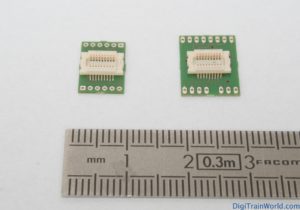
Next18 (NEM662) – Interface adapter boards from Doehler & Haass

Next18 (NEM662) Plug
And just as finally, Next18 was becoming the pretty much defacto universal standard… someone is trying to kill it.
Meet ESU’s E24 (soon “Next28” ?)
The suspect in this attempted murder of Next18 is ESU, a renown German decoder manufacturer (and a good one at that). They discreetly launched the E24 digital interface when they release their Loksound Nano 5 decoder. Indeed, the Loksound Nano 5 has the E24 plug, and always came with different adapters (cables, Next18…) for it to be usable in current engines.
In fact, that was whole mini scandal on german forums, because the given dimensions of the decoders were a lure: the decoder wasn’t usable without an E24 adapter, which made it thicker that competitors’ decoders.
Is E24/Next28 a NEM standard? Is it any good?
The introduction of E24 makes sense. In fact, despite my defiance on introducing yet another standard, it is without any doubt a standard introduced with good intentions.
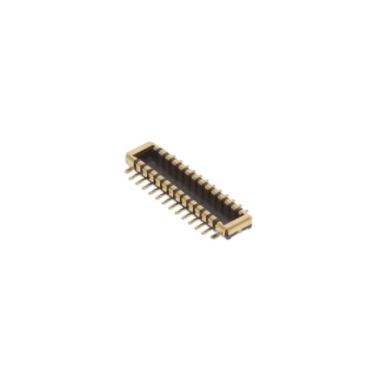
E24 Next28 digital interface plug
What happened recently is that ESU apparently tried to submit it to the RailCommunity manufacturer’s association in Europe, intending for it to become a NEM norm like all other standards. And apparently…they failed getting enough votes.
So NO, at the time I am writing this article in January 2024, E24 or Next28, whatever you want to call it, is NOT a DCC standard, on any continent. It is only a proposed standard. And as we have already seen, being “a standard” only means being recognized in Europe or America, it doesn’t mean it’s an agreed upon universal connector anyway… so in the meantime, it is a proposed norm, entitled “RCD-124” at the RailCommunity organization.
So why am I talking about it? Because to my surprise, several manufacturers are jumping onboard E24 already! At the time of writing, as far as I know:
In the US, Atlas seems to have released at least one model with a E24 interface and an ESU decoder (see here).
Zimo is already announcing it will release E24 decoders (see their news from January 12th, 2024).
Doehler & Haass is doing the same thing (see here in German).
Other model manufacturers are following suite, like Revolution Trains from the UK (here), and there are extensive discussions on forums (including in German here).
So, all in all, it seems whether we like it or not, E24 / Next28 will arrive on the market. Whether it will be successful or not is impossible to tell for now, but let’s see what it brings.
Have a look (in German) at the tech specs here: https://normen.railcommunity.de/RCD-124.pdf
And frankly, as an N scaler myself, I must admit those specs sound very interesting.
- Even smaller size
For smaller decoders, sound or soundlesss - More outputs for functions
While Next18 provides 18 connections, this new E24 provides no less than 28 connections between decoder and engine; hence the intended commercial name “Next28”. That means even more realistic lighting options with at least 10 (of which 8 regular amplified outputs) and up to 13 discrete lighting outputs (if not using SUSI or other advanced functions for example). - Smart output attributions, including a capacitor pin
But adding more outputs isn’t all. The standard also accounts for modern needs in small engines. There are of course speaker pins, as on Next18, but there is something notable that is new. There is also a “Capacitor +” connector. Which means that manufacturers may be able to integrate lots of anti-flicker capacity in their trains, with the decoder able to benefit from it automatically (see my article Capacitors for smoother sides: Zimo STACO review for example). Now, again, it doesn’t mean model manufacturers will be using this pin, but it’s great news that it’s here. And it is distinct from the regular + pole, with experts knowing why this is important.
Is E24 / Next28 the future interface of choice?
I don’t know, and to be fair, my opinion is split in two:
- On the one hand, as a business person and a train aficionado, I despise the added market fragmentation and consumer confusion that this will bring. Especially because, again, this plug isn’t even a standard yet.
- On the other hand, I welcome a plug that delivers so many more outputs for even more realistic trains. But again, this would also require manufacturers to be game and actually implement all outputs. We’ve already seen manufacturers sticking Next18 plugs in, but ignoring their advantages, e.g. not having discrete lighting outputs on the locomotive, basically not using all Next18 outputs and pins of the decoder/interface.
Whatever the case may be. I hereby launch a pretty please to all manufacturers, governing bodies and other people from the industry is this: please, get your game together and find a unique name for this plug. Because we already know it alone already has 4 potential different names. How ridiculous is that?
Look:
-
- E24 – ESU’s official naming
- Next28 – The proposed commercial name
- RCD124 – The official reference of the spec document
- NEMxxx – Whichever NEM number this interface will receive when/if it actually becomes a standard
This is all the same plug, and is already confusing hobbyists on forums worldwide. You don’t even need to be an astute marketing and sales expert to see how terrible this is. Correct this ASAP please, sit down together and talk it out now!
So, what do you think? Is the E24 digital interface the future, at least in smaller scales?
Let me know in the comments! And of course, I would love to discuss and give a right of response to ESU and other governing bodies. This is mostly an opinion piece, and I am always open to changing my mind with a smile and the right arguments!
Oh, and on another topic. Did you know my starter guide book to digital model railroading is still very well rated on Amazon? And it’s also now available in French here, go and have a look if you’re starting in digital.
Reminder: I am a hobbyist and these articles only represent my personal views. I am not receiving any compensation, in any form, from the brands or stores mentioned here. The product names, marketing names, and brands mentioned here are the property of their respective owners.

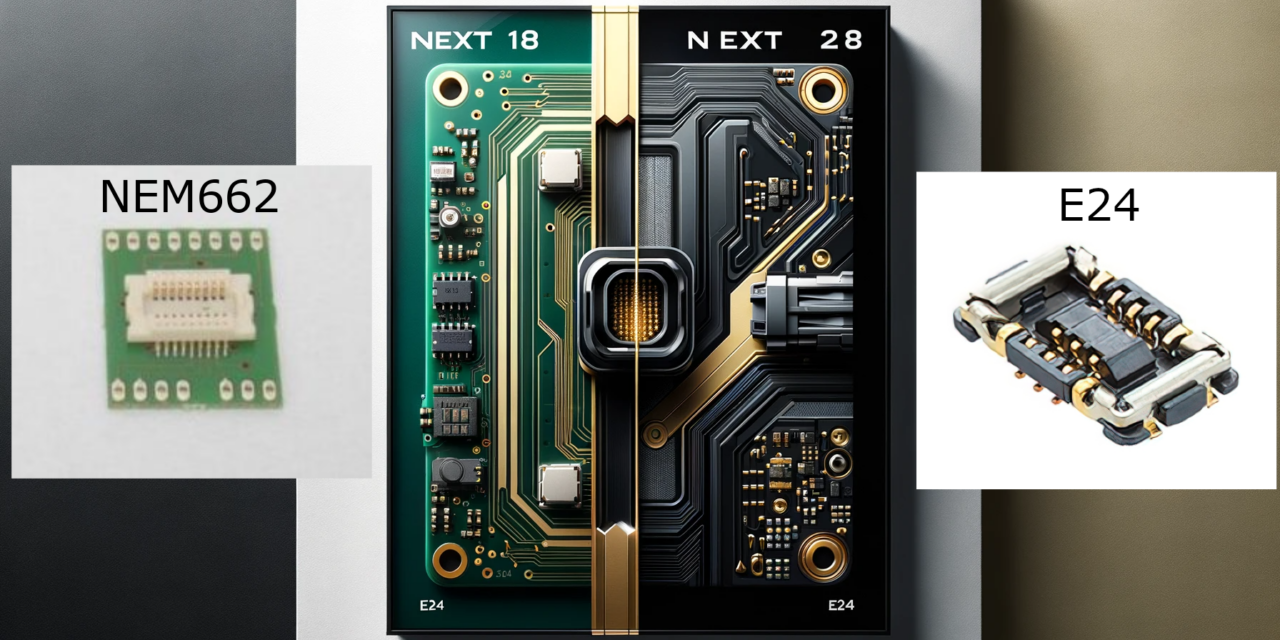

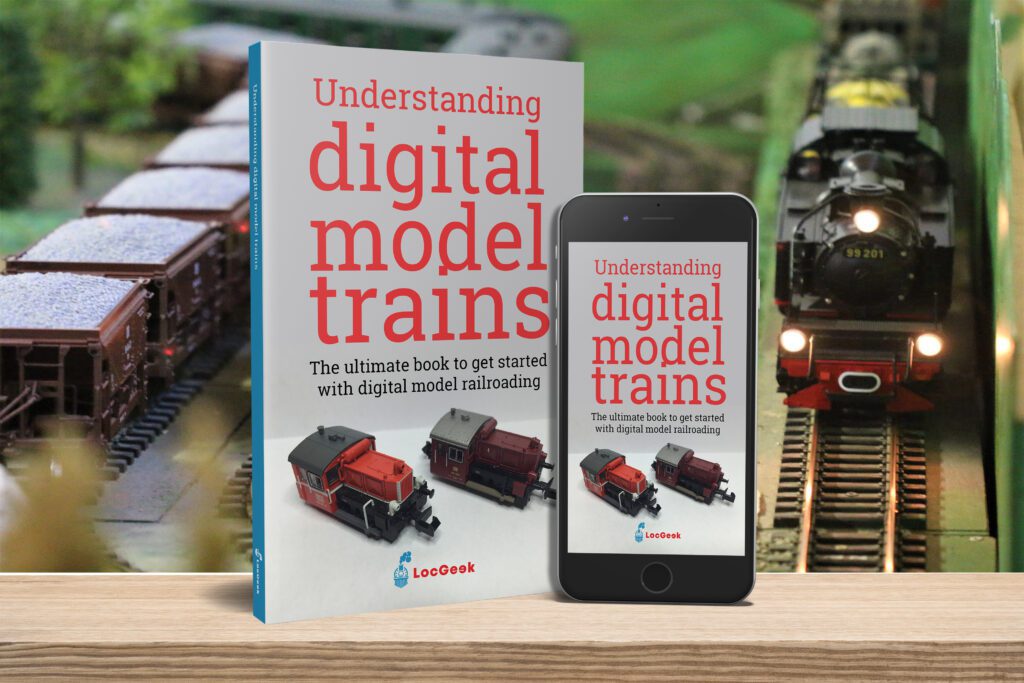


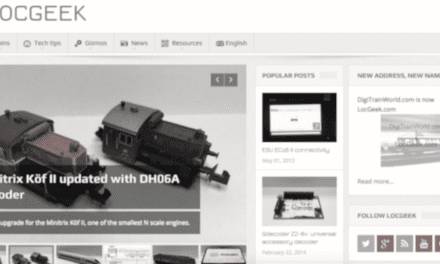
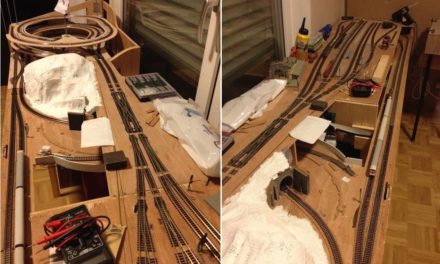
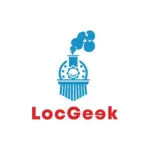

I’m really glad I stumbled across this site when researching the DCC decoder interfaces. I’m fairly new to the hobby, having been “infected” in Japan less than a year ago. One of the things that really surprised me is the fact that the hobby became very technology heavy (mainly the digital side), but the core technology is quite ancient (DCC – 1980s). There have been countless attempts to modernize (and lock users into vendor specific solutions), leaving a veritable mess of supposed standards behind.
As a newcomer, I have a (temporary?) advantage of assessing the current landscape and picking what seems a “future proof” solution. There’s no “silver bullet” unless one really subscribes to a single vendor, even those make unexpected turns now and then.
While Next18 appears to be well established at the moment (I have locos by Piko, Fleischmann and Lemke using it), it apparently took a while for it to get traction – the spec was released in 2011 – which means eons in technology years.
So to me it’s no surprise that “new and improved” approaches are being introduced. In the US, Scale Trains have been using E24/ESU Nano for quite a while (tempted to get one of those). I don’t feel that E24 is out to “kill” Next18, that’s quite impossible at the moment. But they could coexist and perhaps a transition will happen over time.
Of course, there are several controversial topics:
As always, time will tell. I may get one of the Scale Trains or Sudexpress entries to test the waters…
Thanks Michal, and great to see newcomers even if “infected” late 😉
I think in terms of digital interface, there is no real choice to make. You’re pretty much bound to whatever interface the manufacturer has chosen (hence my complaint in the post). But the good news and I am sure you know it, is that you are in no way limited to a specific train brand (Scale Trains, Sudexpress…). No matter the interface, with a DCC decoder fitted on it, you’ll end up with a DCC compatible digital locomotive (unless you choose Märklin Mfx if you’re in HO mostly).
Unless of course you want to convert old analog engines, then the choice of interface becomes relevant; for my part, instead of directly soldering the decoder as usual, I have been installing Next18 adapters (when enough room), just to be able to change the decoder later if I want too. But it’s a more advanced use case.
You are right, one can extend Next18 with SUSI, but that implied room for a SUSI decoder as an extra (for me in N Scale, pretty sparse). Plus, it seems those SUSI modules are becoming rarer. Some manufacturers stopped making them. That makes sense though. New decoders (even for N scale) from Zimo or ESU for example already include sound and many function outputs. So the use of SUSI is becoming less and less relevant (in my opinion).
You’re right, although SUSI exists as an option, it’s probably mostly academic at this point. I also agree that even the whole interface issue is largely academic, in the US we mostly have complete drop-in replacements (for Kato and such) with no connectors at all. As long as you end up with a working DCC loco, you may not even care what’s in it.
But since I became enamored by Next18, I was also thinking about using adapters instead of drop-ins for my upcoming DC-to-DCC conversions. But I suspect there would be little practical value in that, most old locos only have the fwd/rev light anyway (and Kato drop-ins provide those LEDs where they need to be).
BTW – I’ve been “flirting” with Z scale, and recent AZL models with TCS decoders definitely push the envelope! There’s no space for standardized connectors, they use custom fitted drop-ins. 5 functions, 3 on-board LEDs in Z, that would be pretty decent in N-scale!
While the above may sound like we don’t need any interfaces after all, standards like E24 should enable more manufacturers to easily “hide” a tiny off-the shelf solution with a lot of functionality in their small scale products. Even tinier than Next18, with “more cowbell”!
Haha you’re exactly right about installing next18 in old engines with just front and back lights. But then again you can always DIY more. When I can, I add both white and red leds, independently connected (in Germany at least, engines have white on both sides while shunting). That’s already four outputs needed.
As for E24, well I’ve got adapters for both “in stock”. In terms of size – especially height, those boards are close to the N18 ones (and the decoders too), so at this point there is no added value for me to install an E24 interface, unless one needs even more outputs. I’ve yet to fit an E24 board in an old loc, I’m sure I will at some point.
In all cases, I agree with you: you should go for an N18/E24 board installation whenever space allows it. Who knows what decoders will do next: it’s always nice to know you’d just have to unplug and plug a decoder. I already had the case in fact: an engine I had fitted with N18 and a standard decoder. Now that sound decoders are so small; I was able to just switch to a sound decoder (and add a speaker).
Don’t even get me started on Z scale. I mean it’s a wonderful scale in its own right. But appart from models with those drop ins, I can only imagine the nightmare of trying to fit a decoder with even less space than in N 🤣
The German N-Bahn magazine (2024, issue 6) has an interesting article testing the early E24 products, with some teething compatibility issues discovered in the Zimo decoder… additional options are coming (D&H), but for the moment it seems to be an ESU-exclusive game.
Thanks, I think I saw that. By the way in the meantime, Zimo has also jumped on the E24 bandwagon.